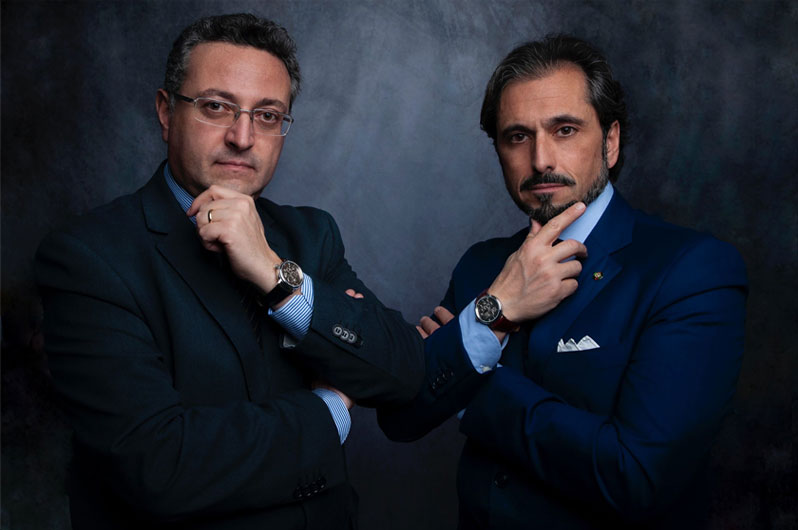Petrus: how a one-of-a-kind watch came to be
From conception to realisation: a journey through the past, present and future

Holding a Petrus piece in hands, one cannot fail to notice the particular workmanship that characterises the timepiece and the small stylish details that make it a resoundingly unique watch.
Anyone who is not a watchmaking aficionado may wonder how an object of such craftsmanship is made but even before this, they may wonder what inspired such a peculiar name. Observing the object, however, it becomes clear that the history of its name starts from a place far away, in a distant past that has become apparent only today, in the present, in the various phases of its production.
A clear idea: Petrus as a cornerstone on which to build the future
The name Petrus comes from the most famous Peter you can imagine, he who has reached sainthood and who constantly watches over the Eternal City in the shadow of the dome. Indeed, it was Saint Peter to have inspired Carmelo Caruso and Gianluigi Di Lorenzo – the founders of KEFA – to embark on this adventure and create this specific timepiece. The story of Peter, who left his fishing nets behind to follow Jesus, inspired the two men to change their lives and to follow this dream. Hence Petrus, the name in Latin, to encapsulate both of its meanings: Pietro and pietra – the Italian terms for “Peter” and for “stone” respectively.
A timepiece that for Carmelo and Gianluigi, thus becomes the cornerstone on which to build their entrepreneurial future.
A difficult path: from sketches to the finished product
This, therefore, forms the basic idea with which to face the next phase, that of the material realisation of the watch. The nerve centre of Petrus’ production is located in Pavia, where KEFA collaborates with a company able to create specific renderings for watches. From the first design, based on Carmelo and Gianluigi’s sketches, came the actual prototypes and subsequently the final realisation of the finished product.
The path was not easy and linear but was paved with hitches and delays that risked derailing this ambitious project on more than one occasion.
Missing an E – start over from scratch
The first issues arose during the prototype production phase, the completion of which was scheduled for April 2019. Yet, they ended up being delivered only in July of that year. This delay in turn postponed the actual production and brought with it an additional hitch: after being subjected to as many as three castings, being subject to the finishing, polishing and assembly processes, with the integration of a 100% Made in Italy strap made specifically by a specialised company, we realised that the raw mould of the watch contained an error. In the inscription “miserando atque eligendo”, bearing the fundamental motto of Pope Francis and which was fused onto the caseback, the letter “e” in “atque” was missing.
This tiny but unpardonable error, able to impact upon the entire production process, meant having to start over from scratch – right from remaking the mould.
The final tweaks: little details that make a big difference
Finally, once having obtained the three prototypes, the partners moved on to the phase of making any final modifications, small functional and stylish details that would confer an extra touch of elegance to the final product as well as make it more comfortable to wear and more aesthetically harmonious. Specifically, the winding crown was enlarged so as to better display the KEFA logo, represented by a spiral that veers off. The caseback was also thinned so as to make the watch slimmer and lighter whilst the circumference was rounded, having initially been more squared.
In short, the transition from the prototype to the real production of the Petrus watches was now concluded, thus paving the way for the timepiece to be launched on the market.
A future to be built together
How the story of each individual Petrus will continue depends solely on those who decide to possess one of these timepieces and on the intimate and personal relationship that they will eventually forge with such an object. This is because a watch – and especially a watch that embodies values as important as Christian values – not only represents a timepiece for the wearer but becomes a distinctive symbol that describes them as person and forms an integral part of their own story and identity.
From here, each of the 2013 Petrus timepieces will take a different and unpredictable road, as only time will tell.











